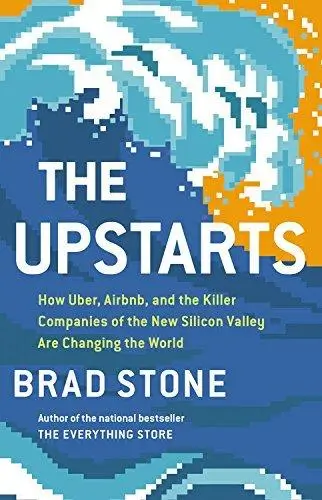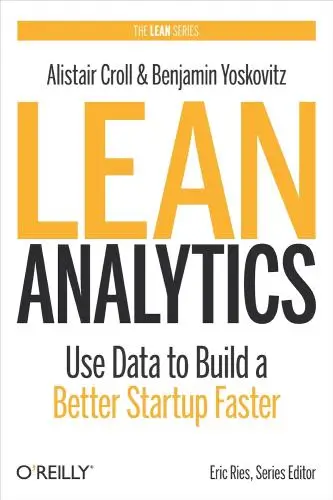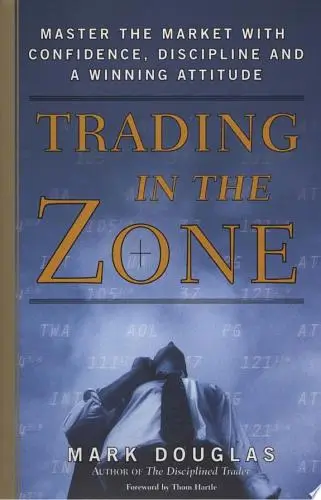Made to Stick
Why Some Ideas Survive and Others Die
What's it about?
Made to Stick is a definitive guide to creating ideas that stick in people's minds. The book explores why some ideas resonate while others fade away, offering practical strategies to make your message memorable. With engaging stories and real-world examples, Made to Stick teaches readers how to craft messages that are simple, unexpected, concrete, credible, emotional, and story-driven. Whether you're a marketer, educator, or leader, this book will revolutionize the way you communicate and help you make your ideas stick.
About the Author
Chip Heath is a bestselling author known for his insightful books on decision-making and change. With a knack for blending research with engaging storytelling, he offers practical advice on how to make better choices and create lasting impact. His works, like "Made to Stick" and "Switch," explore the psychology behind successful communication and transformation, making complex concepts easy to understand and apply in real life. Heath's unique perspective and entertaining writing style make his books a must-read for anyone looking to improve their decision-making skills.
10 Key Ideas of Made to Stick
Simplify Your Core Message to Its Absolute Essence
The single most important thing to remember is: simplicity is key.
When you distill complex ideas into simple, memorable nuggets, they become stickier.
The easier an idea is to understand and recall, the more impactful it will be.
Avoid unnecessary jargon and details that can dilute your core message.
Learn DeeperIdentify Your Core Message: Start by asking yourself, 'What is the one thing I want my audience to remember?' This could be for a presentation, an email, or even a conversation. Write it down in one sentence.
Simplify Language: Review your core message and remove any jargon or complex language. Ask, 'Could a friend outside of my field understand this?' If not, simplify further.
Use Analogies or Metaphors: Find a simple analogy or metaphor that relates to your core message. This makes complex ideas more relatable and memorable.
Test Your Message: Share your simplified message with a small group from your target audience. Ask them to repeat it back to you in their own words to ensure it's clear and sticky.
Repeat Key Points: In your communication, repeat the core message in different ways to reinforce it. This could be through stories, examples, or restating the message at the beginning and end.
- Example
If you're presenting a new software tool to non-technical staff, instead of detailing every feature, focus on how it will make their daily tasks easier. For example, 'This tool is like having a personal assistant for your most tedious tasks—it automates them so you can focus on what you do best.'
- Example
When writing an email to advocate for a new company policy, instead of burying the request in details, start with the impact. For instance, 'Implementing a four-day workweek could increase our team's productivity and job satisfaction significantly, similar to how a well-rested athlete performs better.'
Use Unexpected Twists to Grab and Hold Attention
Incorporate surprises or unexpected facts in your message.
Our brains are wired to pay attention to things that violate our expectations.
By presenting information in a way that is counterintuitive or surprising, you make it more memorable and engaging.
This tactic keeps your audience interested and eager to learn more.
Learn DeeperStart with a Bang: When you're about to share information, especially if it's in a presentation or an article, begin with a surprising fact or statistic that challenges common beliefs. This could be something like 'Did you know that the most successful people are not necessarily those who work the hardest but those who procrastinate creatively?'
Incorporate Storytelling with a Twist: Use stories in your communication but ensure they have an unexpected turn. For instance, if you're teaching about resilience, tell a story of someone who failed numerous times but the twist is how their biggest failure turned into their biggest success, in a way no one would expect.
Use Visuals that Surprise: In presentations or social media posts, use visuals that grab attention because they're not what one would expect. For example, if talking about productivity, instead of showing a typical busy office, show an image of someone meditating or taking a walk, then explain how these activities surprisingly boost productivity.
- Example
Imagine you're giving a talk on the importance of failure in achieving success. You could start with a surprising fact: 'Thomas Edison failed over 1,000 times before inventing the lightbulb.' This not only grabs attention but also sets the stage for discussing perseverance and innovation.
- Example
Writing a blog post about healthy eating? Start with a counterintuitive statement like, 'Eating chocolate can be good for your heart.' Then, delve into the specifics of how dark chocolate in moderation can benefit heart health, challenging the common notion that all chocolate is unhealthy.
Concretize Your Ideas with Vivid Examples and Analogies
Make abstract concepts concrete by using vivid examples, analogies, and images.
For instance, consider the concept of "time management."
Instead of simply stating that it’s about prioritizing tasks, you might compare it to juggling.
Imagine a juggler who has to keep multiple balls in the air.
If they focus too much on one ball, the others may fall.
This analogy illustrates the need to balance various responsibilities while ensuring none are neglected.
Similarly, when discussing "emotional intelligence," you could liken it to a garden.
Just as a gardener must tend to different plants, understanding their unique needs, emotional intelligence involves recognizing and nurturing different emotions in ourselves and others.
These concrete details help people understand new concepts by relating them to experiences they already know.
This approach makes your message more relatable and easier to visualize, thereby enhancing its stickiness.
Learn DeeperUse Analogies to Explain Complex Ideas: When you're trying to explain a complex idea, find a simpler, more familiar concept that shares similarities with the complex idea. This makes the new information more digestible and relatable.
Incorporate Vivid Imagery in Your Explanations: Whenever possible, use descriptive language that evokes images or scenarios in the mind of your audience. This could be through storytelling or painting a picture with words to make your point clearer.
Leverage Real-life Examples: To make an abstract concept concrete, tie it to a real-life example. This helps bridge the gap between theory and practice, making the concept easier to grasp and remember.
Use Metaphors to Create Connections: Metaphors are powerful tools for making abstract ideas concrete. By comparing a complex idea to something well-understood, you create a mental shortcut to comprehension.
- Example
Explaining the Internet as a 'series of tubes' to someone unfamiliar with digital infrastructure. This analogy simplifies a complex network of servers and connections into a concept that's easier to visualize.
- Example
Describing the process of photosynthesis by comparing it to a factory. In this analogy, the factory (a plant) takes raw materials (carbon dioxide and water), uses machinery (chlorophyll) in the presence of energy (sunlight), and produces products (glucose and oxygen).
Establish Credibility Through External Validation and Personal Experience
Build trust in your message by incorporating expert opinions, statistics, and personal anecdotes.
Demonstrating expertise or showing how others have successfully implemented your ideas can significantly increase your message's credibility.
Personal stories also add a human element that can make your message more relatable and trustworthy.
Learn DeeperSeek Out and Share Expert Opinions: When you're trying to persuade someone or share knowledge, bolster your argument with expert opinions. This could mean quoting a well-respected figure in the field, referencing a study, or even inviting an expert to speak on the topic if possible.
Incorporate Statistics That Support Your Point: Find and use relevant statistics to back up your claims. Make sure these statistics are from credible sources. Present them in a way that's easy to understand, such as through infographics or simple percentages.
Share Personal Experiences Related to the Topic: Nothing makes your message more relatable than sharing your own experiences. When appropriate, tell a short story about how the information has impacted you personally or how you've applied it in real life.
Demonstrate Success Stories: If you're advocating for a particular approach or idea, share examples of others who have successfully implemented it. This could be through case studies, testimonials, or before-and-after scenarios.
- Example
If you're trying to convince your team at work to adopt a new project management tool, you might start by sharing data on how it has increased productivity by 30% in similar-sized companies, according to a recent study. Then, you could share a personal anecdote about how using the trial version of the tool helped you organize and complete a personal project ahead of schedule.
- Example
When discussing the benefits of a plant-based diet, you could reference a well-known nutritionist's opinion on the health benefits, followed by statistics showing reduced risk of heart disease. Adding a personal touch, you could share your own journey of switching to a plant-based diet, including the challenges you faced and the positive outcomes you've experienced.
Appeal to Emotions to Make People Care
Connect with your audience on an emotional level by highlighting how your message impacts real people's lives.
Emotions drive action; when people feel something, they're more likely to remember and act on your message.
Use storytelling to evoke emotions like empathy, happiness, or outrage, making your message more compelling.
Learn DeeperIdentify the Emotional Core of Your Message: Before you communicate, think deeply about the emotional core of what you're trying to convey. Ask yourself, 'Why should anyone care about this?' and 'How does this affect them on a personal level?'
Use Storytelling to Convey Your Message: People connect with stories more than data. Share real-life examples or hypothetical scenarios that illustrate your point. Make sure these stories highlight the emotional stakes involved.
Be Authentic in Your Emotional Appeal: Authenticity resonates. Ensure that any emotional appeal is genuine and reflects true consequences or benefits. Avoid exaggeration that could undermine your credibility.
Incorporate Visuals to Enhance Emotional Impact: Whenever possible, use images, videos, or other visuals that complement your message. Visuals can evoke emotions more quickly and powerfully than words alone.
Encourage Empathy by Showing Impact on Real People: When appropriate, share testimonials or case studies that show how real individuals have been affected. This can help your audience empathize and see themselves in the situation.
- Example
A non-profit organization aiming to raise funds for clean water initiatives shares a video story of a young girl in a developing country, detailing her daily journey to collect water and how it affects her education. The story is paired with a call to action, encouraging donations.
- Example
A health coach trying to motivate clients to adopt a healthier lifestyle shares personal stories of transformation, focusing on the emotional journey of overcoming obstacles rather than just before-and-after photos. They highlight feelings of accomplishment, happiness, and increased self-esteem.
Deeper knowledge. Personal growth. Unlocked.
Unlock this book's key ideas and 15M+ more. Learn with quick, impactful summaries.
Read Full SummarySign up and read for free!
Made to Stick Summary: Common Questions
Experience Personalized Book Summaries, Today!
Discover a new way to gain knowledge, and save time.
Sign up for our 7-day trial now.
No Credit Card Needed

Similar Books

$100M Offers
Alex Hormozi
Principles of Marketing, Global Edition
Gary Armstrong
The 100 Best Business Books of All Time
Jack Covert
Playing to Win
A.G. Lafley
Productize
Eisha Armstrong
Start Your Own Pet-Sitting Business and More
Entrepreneur Press
The 22 Immutable Laws of Marketing
Al Ries
The Upstarts
Brad Stone
Lean Analytics
Alistair Croll
Built to Sell
John WarrillowTrending Summaries

Peak
Anders Ericsson
Never Split the Difference
Chris Voss
Smart Brevity
Jim VandeHei
The Psychology of Money
Morgan Housel
The First 90 Days
Michael D. Watkins
Atomic Habits
James Clear
Thinking, Fast and Slow
Daniel Kahneman
The Body Keeps the Score
Bessel van der Kolk M.D.
The Power of Regret
Daniel H. Pink
The Compound Effect
Darren HardyNew Books

The Art of Spending Money
Morgan Housel
$100M Offers
Alex Hormozi
A Candle for Kiri
Edna Mae Holm
Principles of Marketing, Global Edition
Gary Armstrong
Serpent Rising: The Kundalini Compendium
Neven Paar
Feeling Is the Secret
Neville Goddard
The 100 Best Business Books of All Time
Jack Covert
My Oxford Year
Julia Whelan
Trading in the Zone
Mark Douglas

